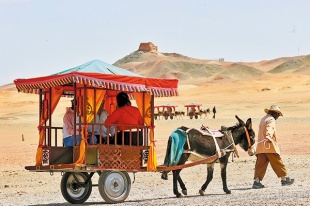Guardians of the Great Wall
Dedicated couple and teams of experts devote themselves to protecting and better understanding our heritage, report Fang Aiqing in Dunhuang and Ma Jingna in Lanzhou, Gansu.


From his perspective, observation, experimentation and practical experience are highly valued in their work — which involves sites distributed over a wide area — especially in evaluating the effect of preservation measures and finding problems and corresponding solutions.
"Our ultimate goal is to keep the Great Wall healthy and maintain its longevity," he says.
The Great Wall is representative of the genre of earthen sites in China. These earthen relics account for around one-third of the country's 767,000 immovable cultural relics, says Wang Yanwu, director of the relics preservation research department of the Conservation Institute, Dunhuang Academy. The academy is best known for its research and preservation of the Mogao Caves, a UNESCO World Heritage Site, and overseeing several other grotto complexes along the Hexi Corridor.
Unlike Zhang Chunsheng's team that focuses mainly on work in situ, the academy's "multi-field coupling laboratory", featuring the preservation of cave temples and earthen heritage sites, reveals the mechanisms behind the "diseases" that can affect relics and develops technical solutions.
This laboratory, the first of its kind in China to be employed in cultural relics preservation, is able to simulate the four seasons, and the erosion by wind, rain and snow that the earthen relics could experience in a natural environment.
It enables experiments on large-sized samples, simulating the actual environment and verifying deterioration of the surface, as well as potential materials and techniques to reinforce the relics.
The laboratory consists of three test chambers, namely summer, winter, wind and rain, which can realize temperatures ranging from-30 C to 60 C and humidity from 10 percent to 90 percent.
The intensity of rain and snowfall, and even the difference in the east-west Great Wall's sun-facing and shaded sides, is under consideration, as the lab analyzes the impact of natural forces.
The largest sample at the lab, for now, is a model wall made from earth taken from near the site of Suoyang City, the ruins of a transportation hub on the ancient Silk Road located around 150 km away from today's Dunhuang city. It's 2.8 meters long, 2 meters tall, 1 meter wide at the bottom and 60 centimeters at the top. It weighs around 15 metric tons.





































